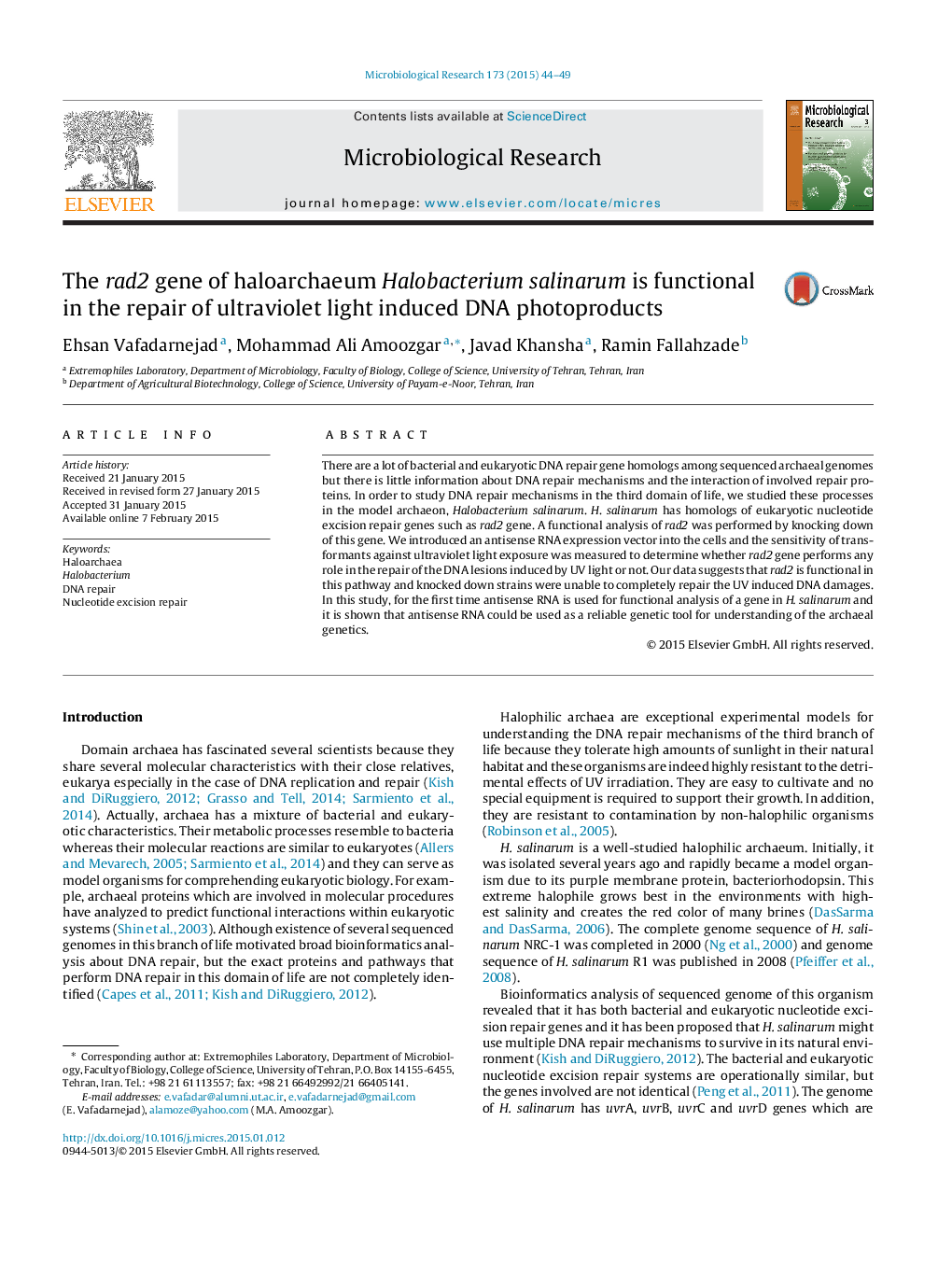| Article ID | Journal | Published Year | Pages | File Type |
|---|---|---|---|---|
| 2092186 | Microbiological Research | 2015 | 6 Pages |
There are a lot of bacterial and eukaryotic DNA repair gene homologs among sequenced archaeal genomes but there is little information about DNA repair mechanisms and the interaction of involved repair proteins. In order to study DNA repair mechanisms in the third domain of life, we studied these processes in the model archaeon, Halobacterium salinarum. H. salinarum has homologs of eukaryotic nucleotide excision repair genes such as rad2 gene. A functional analysis of rad2 was performed by knocking down of this gene. We introduced an antisense RNA expression vector into the cells and the sensitivity of transformants against ultraviolet light exposure was measured to determine whether rad2 gene performs any role in the repair of the DNA lesions induced by UV light or not. Our data suggests that rad2 is functional in this pathway and knocked down strains were unable to completely repair the UV induced DNA damages. In this study, for the first time antisense RNA is used for functional analysis of a gene in H. salinarum and it is shown that antisense RNA could be used as a reliable genetic tool for understanding of the archaeal genetics.
